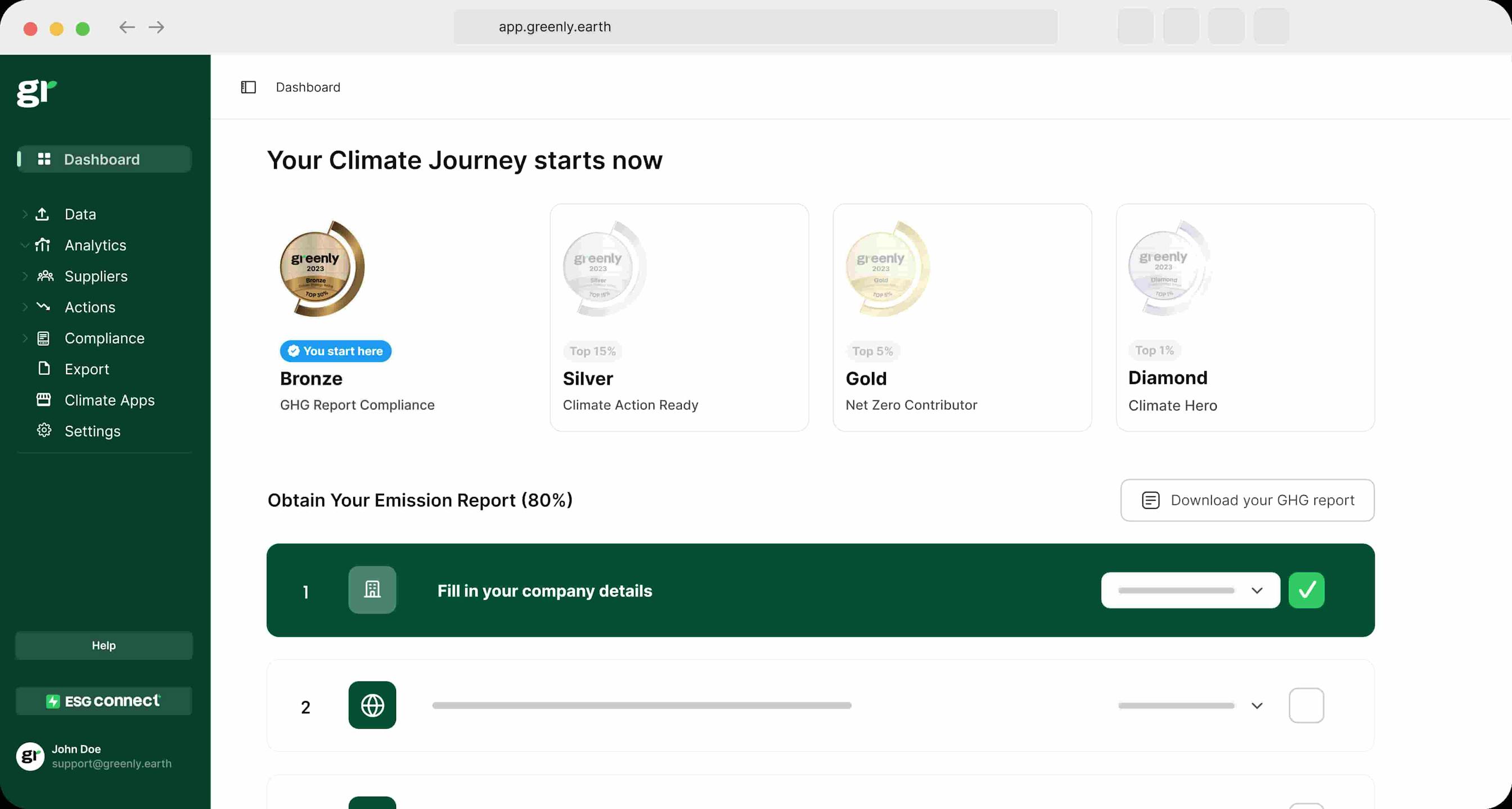ESG / CSR
Industries
Why is Plastic Bad for the Environment?
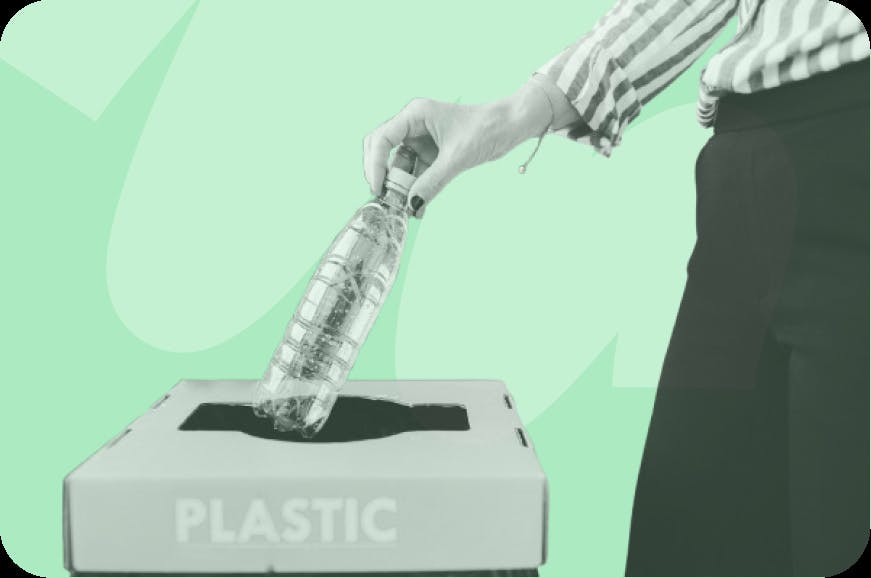


Plastic is a material that is deeply intertwined with our modern lives. Plastic exists in nearly every industry, from food to cars to footwear to space equipment – but we talk about it as both being incredibly useful and dangerous for species worldwide, as it contributes to plastic waste, plastic pollution, plastic debris, plastic packaging waste, and plastic waste generation. The plastics industry is notorious for being bad for the environment.
💡 What is plastic, and why is the manufacturing process for plastic produced makes harmful to the earth and human health?
In this article, we'll explain in depth what plastic is, why plastic is bad for the environment and the ocean, and solutions to mitigate the use and overall impact of plastic.
What is plastic?
💡 Plastic is extremely malleable due to the fact that it's made up of polymers, making it easier to cut through in addition to it's low melting point.
At the molecular level, polymers are long chains of individual monomer links which bond easily to each other. Polymers are also so bulky that they don't stack together well. This results in a compound that:
- can change shapes or forms easily;
- is not particularly dense.
How is plastic used in the plastics industry?
💡 In comparison to other materials, such as metal or glass, plastic is usually lighter and more flexible – seeing as plastic is able to achieve a feasible glass transition temperature (Tg) which allows for soft, flexible, and even rubber like state materials to be made.
This makes global plastic production particularly useful for a wide range of purposes, and is precisely why the plastic industry has found so much success in creating beverage containers for several other industries, such as with:
- plastic bottles
- milk bottles
- plastic bags for grocery shopping
- ice cream tubs
- shampoo bottles
- food wrappers
- food containers
- plastic additives or other commodity plastics (such as plastic films used for new containers or shipping products like food packaging)
👉 However, the problem with fully synthetic plastic is that it doesn't contain any molecules from our natural environment – meaning that engineering plastics like these requires even more industrial activity, which results in even more emissions.
Luckily, most plastic items are recyclable – seeing as plastic can be melted and then reshaped, so most plastics can be heated until they can be formed into something else. Knowing this about the recycling process helps explain why it's bad to throw a banana peel in your recycling bin – it could get heated in with the plastic, rendering the reformed banana-plastic useless.
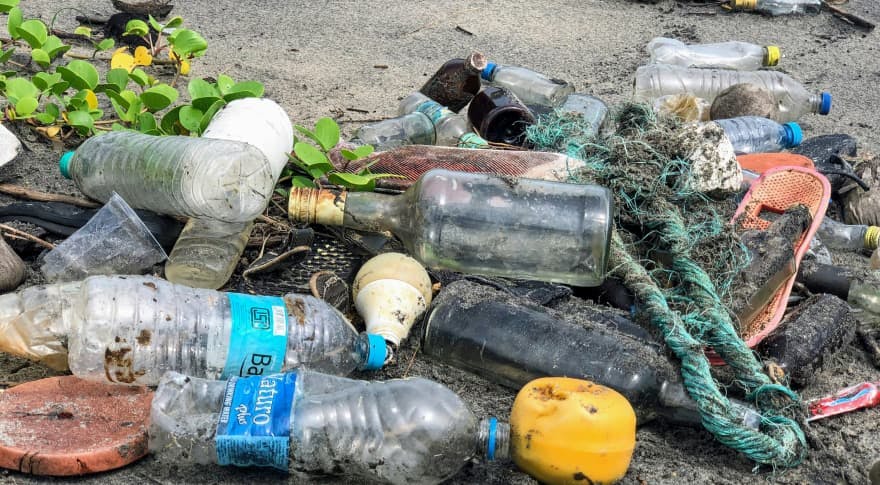
Where do plastic materials come from and how is plastic made?
Plastic can be made in a variety of ways with a variety of materials. These materials can come from natural sources like latex from tree sap, tar, and amber. However, it is much cheaper and easier to make plastic from fossil fuels like crude oil and natural gas, partly because our industrial system is based on these fuels.
Intense heat or pressure is required to shape the plastic into something functional. For example, crude oil is heated in a furnace in the refining process before it is distilled into lighter compounds. Through a process called polymerisation, the light compounds are connected into polymers either with the addition of a catalyst or the removal of water.
The table below will depict how much plastic used according to each industry:
| Waste Type | Global Plastic Waste Production (million tonnes) |
|---|---|
| Packaging | 155.9 |
| Consumer Goods | 47.0 |
| Automotive | 47.9 |
| Textiles | 42.9 |
| Construction | 21.6 |
| Electrical/Electronic Devices | 15.9 |
| Other | 67.7 |
Sources: Statista and OECD
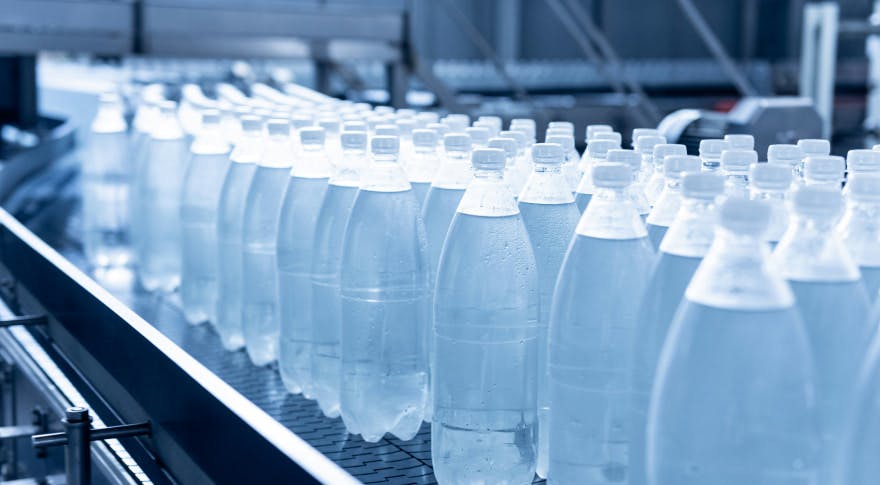
How does plastic harm the environment?
Every part of the “plastic life cycle” is harmful for the environment and creates pollution.
Here just a few of the ways that the plastic pollution crisis has come to be:
- Extraction of Fossil Fuels – Plastics exhibit enormous potential to continue emitting insurmountable amounts of greenhouse gas emissions in the atmosphere, as they currently account for over 3% of global GHG emissions. For example, it is estimated that people throw away 300 million tons of plastic every year – of which ends up in the landfill and contributes to even more greenhouse gas emissions.
👉 Extracting the fossil fuel required to create new plastics has negative impacts on local ecosystems by disturbing wildlife, polluting ground water systems, and causing oil spills in the ocean.
- Production of Plastics – This refers to the mechanical properties, electrical equipment, high temperature, and how plastic is molded repeatedly before it can be used for commercial purposes – such as a water bottle cap or plastic mold for product packaging. The production process releases greenhouse gases into the atmosphere, exacerbating human-induced climate change and the distribution component plastic's life cycle. As goods produced around the world are intended for international markets, more fossil fuels need to be burned to deliver the products.
- Distribution – The distribution of and use of plastic products alone contributes to poor environmental conditions and has a profound impact on any nearby marine environment. For instance, the United States is responsible for generating over 35 million tones of plastic – but only about 9% of that plastic gets recycled. And in that process, enormous amounts of energy, often generated from fossil fuels, need to be used to heat the plastic so that it can be remolded for new use.
💡 About 12% of the plastic produced ends up being incinerated. The fumes from both recycling and incineration add more greenhouse gases to the atmosphere – and then, of course, the rest is plastic pollution.
- Plastic Trash – This refers to the consistent poor disposal, recycling, incineration, and litter of various plastics such as polyvinyl chloride – which is the industrial-like-strength plastic used for wire cables and medical purposes. As a whole, we have produced a striking 9.2 billion tons of plastic since 1950, with production doubling each year on average. The most long-lasting plastics can take up to 500 years to decompose. In addition to this, a wide variety of different chemicals are added during the production process depending on the use of the plastic – which can further impact air quality and air pollution.
About 40% of plastic produced are single-use plastics – they have an intended short lifespan. Think of plastic bags, packaged water, to-go containers and plastic ware. They all often end up in landfills or in nature.
👉 Therefore, how much plastic waste is produced is irrelevant, as plastic waste inputs damage to the planet even if plastic consumption is reduced.
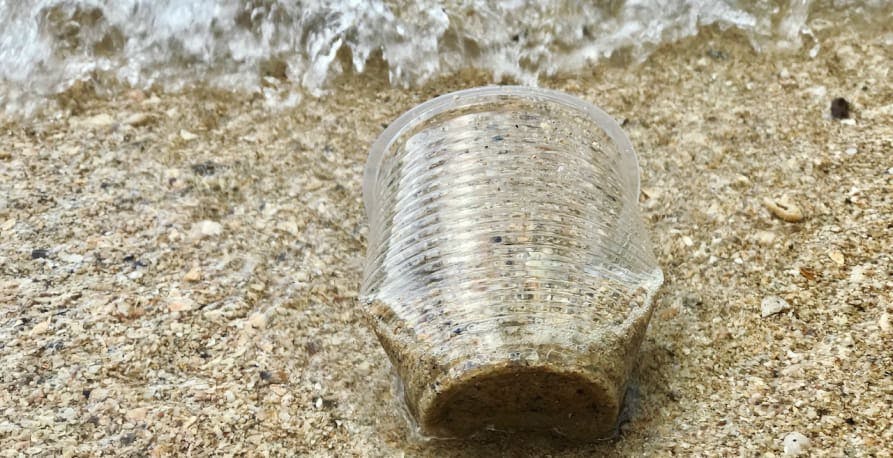
Why is plastic bad for the ocean?
Plastic, which comes in many shapes and sizes, can end up polluting nearly every corner of our world – bodies of water, ecosystems, and our atmosphere.
Many aquatic animals consume plastic as they believe it to be prey, and as a result – we are eating microplastics in the fish we eat.
💡Ultimately, plastic threatens ecosystems, lowers biodiversity, and can even change the flow of nutrients between plants and animals.
What are microplastics?
As plastic is worn down by seawater and sand, it creates microplastics – which refer to plastic bits smaller than 5 millimeters (0.2 inches). Microplastics are more pervasive than larger plastics – they have been found in the guts of plankton: one of the ocean's smallest living creatures.
Microplastics also show up in sediment layers of the ocean floor. The accumulation by year is on pace with the historical trend of plastic production worldwide.
👉 However, it is important to note that even larger plastics have been found in the depths of the ocean. For instance, when buoyant plastics such as water bottles and plastic bags are in the water for long enough– algae and other life grows on them which weighs them down enough to sink to the ocean floor.
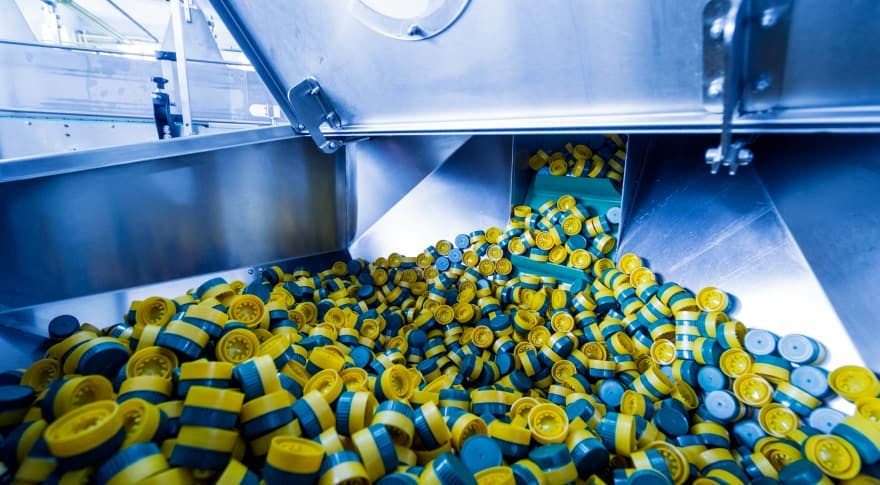
Solutions to reduce plastic pollution & plastic usage
Recycling plastic
Unfortunately, recycling plastic isn't all what it's chalked up to be – seeing as it's not an efficient use of energy – and not as much plastic get recycled as you may think.
According to an investigation, the U.S. has been shipping hundreds of thousands of tons of plastic to other countries, including developing countries that are poorly regulated. Some of these countries include Bangladesh, Senegal, and Laos – where the U.S. can find relaxed environmental regulation and cheap labor to handle the grueling recycling process.
However, much of the American plastic that is transported abroad for recycling cannot be processed. This was revealed with China and Hong Kong in 2015, as they received more than half of the plastic that Americans placed in the recycle bin.
👉 Regardless, the majority of this load of plastic ended up in a landfill due to contamination of the plastic. As a result, China now only accepts plastic that is well cleaned. This is why waste management systems should seek to rectify the way plastic waste is created and overall plastic collection, as most plastic is ended up in landfill.
Implement bans on plastic production
Some places have turned towards banning certain types of plastic in order to limit its negative environmental impact and encourage the government to employ more stringent legislation for recycling.
For instance, California recently passed a law to eliminate single-use plastics. By 2032, all packaging in California must be recyclable or compostable – as plastic pollution facts are encouraging greater climate legislation.
Not only has Canada passed a similar law to California, but they also have a plan to reach zero plastic waste by 2030. Also, India has their own ban on single-use plastics. They elected to ban ear buds in addition to straws, cigarette packets, cutlery, and more.
👉 Overall, banning the use of single-use plastics – could help to mitigate the colossal environmental impact created by plastic.
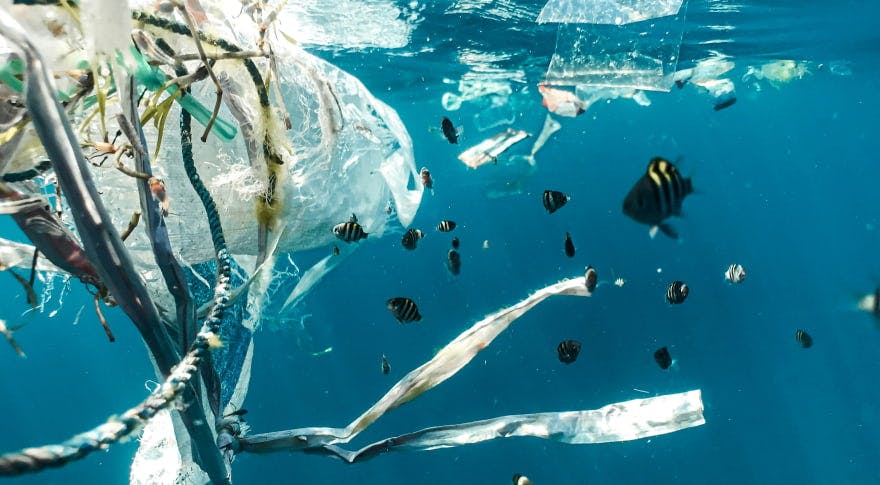
Behavioral changes
Seeing as plastic bans won't get to the root of the problem, it's important for us as a society to tackle over excessive consumerism behavior that aids in the negative impact created by plastic.
💡 This will require innovative solutions to create, use and dispose of items without the use of plastic and reduce the need for single-use items.
Here are just a few suggestions to reduce your single-plastic usage:
- Use a reusable water bottle
- Shop at bulk food stores and use ration containers for dry goods
- Rely on reusable cloth bags
- Bring a durable container with you when you get take-out food or when you need a to-go container at a restaurant
- Wash with a bar of soap rather than liquid soap
👉 Changing your habits to reduce your plastic usage will not only create a positive environmental impact but also you will be kind on your pocket – as you'll save money on plastic bags and plastic water bottles in your everyday, now "greener" lifestyle.
Additional solutions to reduce plastic pollution
Scientists have found some solutions to break down plastic without heat and are working hard to implement them, such as via the use of microbes to help decompose plastic at a more rapid pace.
💡 Wax worms and mealworms can break down plastics into compost that can be used as fertiliser. There are some microbes that can decompose plastics in mere hours, rather than the usual years needed.
Natural alternatives to plastic
Until our society can ween off of its current dependency on plastic, we can turn to natural sources of rubber such as a rubber tree – as it produces latex, which can be used like plastic. In addition to this, amber has latex which can also be used like plastic, and it is sometimes found while mining for other minerals.
Of course, these solutions do not solve the root of the problem regarding the excess consumerism present in our society – as plastic is all-around energy intensive at every step of its lifecycle.
Therefore, it is crucial to change our behaviors and encourage governments to ban the most harmful plastics – but for the time being, we can all do our part to reduce the amount of plastic we use in our everyday lives.
What about Greenly?
If learning about the negative impacts of plastic on the environment has encouraged you to want to do more to limit your impact on the environment, we can help.
At Greenly, we can help you to assess your company’s carbon footprint, and then give you the tools you need to cut down on emissions. We offer a free demo for you to better understand our platform and all that it has to offer – including assistance with boosting supplier engagement, personalised assistance, and new ways to involve your employees.
Learn more about Greenly’s carbon management platform here.
